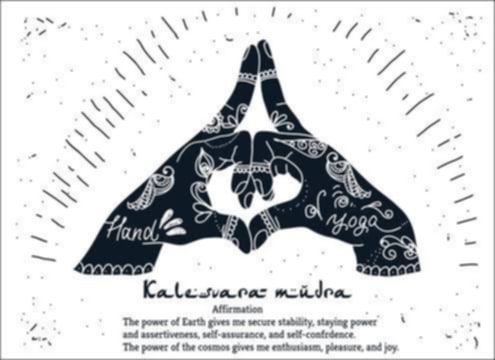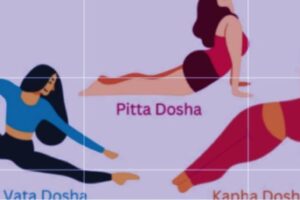
Mudras and Mental Health: How Your Fingers Connect to Healing Energy
In the world of energy healing and mind-body wellness, few practices are as simple yet powerful as mudras. These ancient hand gestures—often used in meditation and yoga—are more than symbolic poses. Each mudra works like an energy circuit, connecting us with the five elements of nature, influencing the chakras, and subtly shifting the energy that flows through us.
If you’re navigating mental health challenges like anxiety, stress, or emotional overwhelm, learning how to use mudras can offer a gentle yet effective way to rebalance your system—right from the palms of your hands.
What Are Mudras?
The word mudra means “seal” or “gesture” in Sanskrit. Mudras are specific hand positions that direct prana (life force energy) in the body, and have been used in Indian, Tibetan, and Buddhist traditions for thousands of years.
Each of the five fingers is believed to be connected to one of the five elements in nature—and to certain qualities of energy in the body and mind.
The Five Elements and the Fingers
| Finger | Element | Represents | Associated Chakra |
|---|---|---|---|
| Thumb | Fire (Agni) | Willpower, transformation, metabolism | Solar Plexus (Manipura) |
| Index Finger | Air (Vayu) | Movement, inspiration, thought | Heart Chakra (Anahata) |
| Middle Finger | Space (Akasha) | Expansion, connection, spiritual awareness | Throat Chakra (Vishuddha) |
| Ring Finger | Earth (Prithvi) | Stability, structure, grounding | Root Chakra (Muladhara) |
| Little Finger | Water (Jala) | Flow, emotions, communication | Sacral Chakra (Svadhisthana) |
When you bring fingers together in certain ways, you’re essentially balancing or activating these elements—and their corresponding chakras—in your energetic system.
Mudras: More Than Just Hand Gestures
While most people associate mudras with hand positions, it’s important to understand that in traditional yogic and tantric systems, mudras can involve the whole body. These include eye positions, postures, breath patterns, and even internal muscle locks (bandhas).
In this broader sense, mudra means a gesture or energetic seal—a way of shaping the body, breath, or intention to channel energy (prana) and influence the flow of consciousness.
There are several categories of mudras, including:
- Hasta Mudras – Hand gestures (most commonly practiced)
- Mana Mudras – Gestures involving the eyes, tongue, ears, nose, or head
- Kaya Mudras – Full-body gestures or postures
- Bandha Mudras – Energetic locks using internal muscles (like in the pelvic floor or diaphragm)
- Adhara Mudras – Involving perineal muscles and energy centers
In modern wellness and mental health contexts, hand mudras (hasta mudras) are most accessible and commonly practiced. But it’s helpful to know that they are part of a much deeper system of mind-body energetics.
Even when you’re simply holding a mudra with your hands, your entire posture, breathing, and inner state contribute to its effectiveness. The body, mind, and energy field are deeply connected—so when one part shifts, everything responds.
Common Mudras for Mental and Emotional Balance
Here are a few mudras that can be especially helpful for mental health seekers, along with the chakras they influence:
1. Gyan Mudra (Mudra of Wisdom)
- How: Touch the tip of the index finger (air) to the thumb (fire), keeping other fingers relaxed.
- Element Balancing: Balances air and stimulates fire (mental clarity + confidence).
- Chakra: Enhances the Heart and Solar Plexus chakras.
- Use For: Calming the mind, improving focus, reducing anxiety.
2. Prithvi Mudra (Mudra of Earth)
- How: Touch the tip of the ring finger (earth) to the thumb (fire).
- Element Balancing: Boosts earth element; stabilizes fire.
- Chakra: Activates the Root Chakra, grounding and calming the nervous system.
- Use For: Fatigue, insecurity, burnout, grounding after emotional overwhelm.
3. Shuni Mudra (Mudra of Patience)
- How: Touch the middle finger (space) to the thumb (fire).
- Element Balancing: Balances space and fire—enhances discipline and detachment.
- Chakra: Supports the Throat Chakra and inner voice.
- Use For: Emotional control, building inner strength, managing impulsivity.
4. Varun Mudra (Mudra of Water)
- How: Touch the little finger (water) to the thumb (fire).
- Element Balancing: Increases water energy, moderates fire.
- Chakra: Activates the Sacral Chakra, associated with emotions and creativity.
- Use For: Emotional balance, releasing sadness, enhancing communication and intuition.
5. Apana Mudra (Mudra of Detoxification)
- How: Touch the middle and ring fingers to the thumb, keeping other fingers extended.
- Element Balancing: Connects space and earth with fire—stimulates cleansing.
- Chakra: Clears energy from the Lower Chakras (Root, Sacral, Solar Plexus).
- Use For: Releasing emotional toxins, grounding, balancing digestion and energy flow.
How to Practice Mudras
You don’t need to be a yogi or meditate for hours to benefit. Just:
- Choose one mudra that supports your emotional or energetic need
- Sit or lie down comfortably, relax your breath
- Hold the mudra with both hands for 5–15 minutes daily
- Combine with affirmations, breathing, or gentle music if you like
You can also use a mudra while journaling, walking in nature, or lying in bed before sleep.
Mudras + Chakras: Subtle Yet Deep Healing
Because each mudra taps into a specific element and chakra, consistent practice can help release emotional blockages, awaken self-awareness, and create space for healing.
For example:
- Struggling with anxiety? Try Gyan or Prithvi Mudra to calm the heart and ground the mind.
- Feeling numb or emotionally drained? Use Varun Mudra to reconnect with your feelings.
- Needing courage and self-worth? Apana Mudra helps activate the Solar Plexus and Root chakras—your inner power centers.
Why This Matters for Mental Health
Understanding that mudras aren’t just about finger positions helps remove the pressure to “do it perfectly.” It’s not about how it looks, but how it feels.
Holding a mudra with a tense body or a scattered mind may not be as effective. But combining a hand mudra with calm breath, a grounded posture, and intentional awareness creates a fuller experience—engaging the nervous system, energy body, and mental space in a unified way.
Final Thoughts
Mudras may seem simple, but their effects can be profound—especially when used with intention. They serve as gentle reminders that healing doesn’t always require big steps. Sometimes, all it takes is a few quiet minutes, a conscious breath, and your hands held in a meaningful shape.
Your hands are powerful tools of healing. Let them speak the language of balance, energy, and self-compassion.


